ÉCAL's grow-at-home sponge furniture expands to ten times its size
Researchers from Swiss design school ÉCAL have unveiled a range of flat-pack furniture at Milan design week that needs to be soaked in water to reach its final form.
The collection, called Under Pressure Solutions or UPS, is constructed from thin, compressed sheets of cellulose sponge, allowing the objects to fit into flat parcels – some small enough to squeeze through a letterbox – for more efficient shipping.
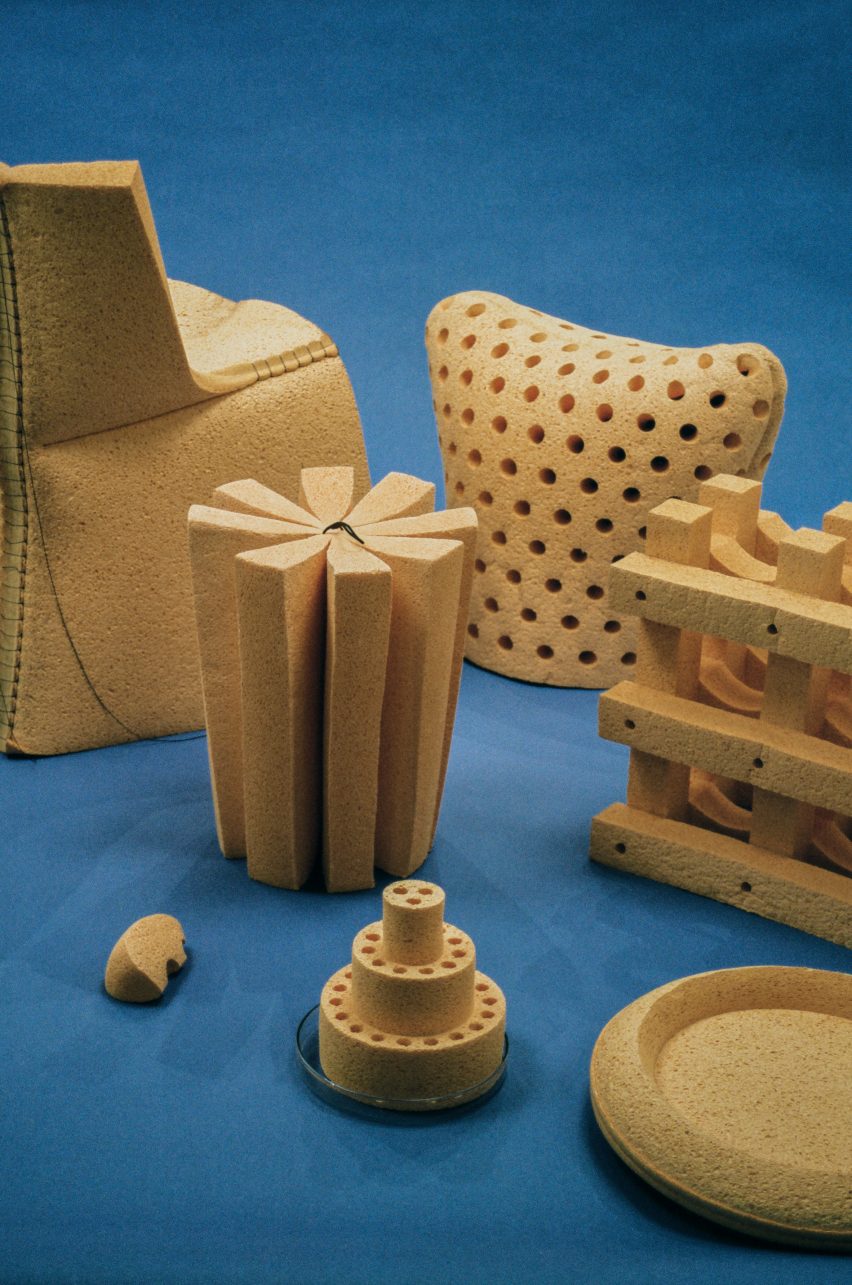
On arrival, the grow-at-home products must then be drenched in the bath or the shower, causing them to blow up to around 10 times their original size in a matter of seconds.
Once wrung out, the sponge is left to dry and harden, creating sturdy, self-supporting furniture that can carry the weight of a person and outperform conventional plastic foam in terms of durability, according to the researchers.
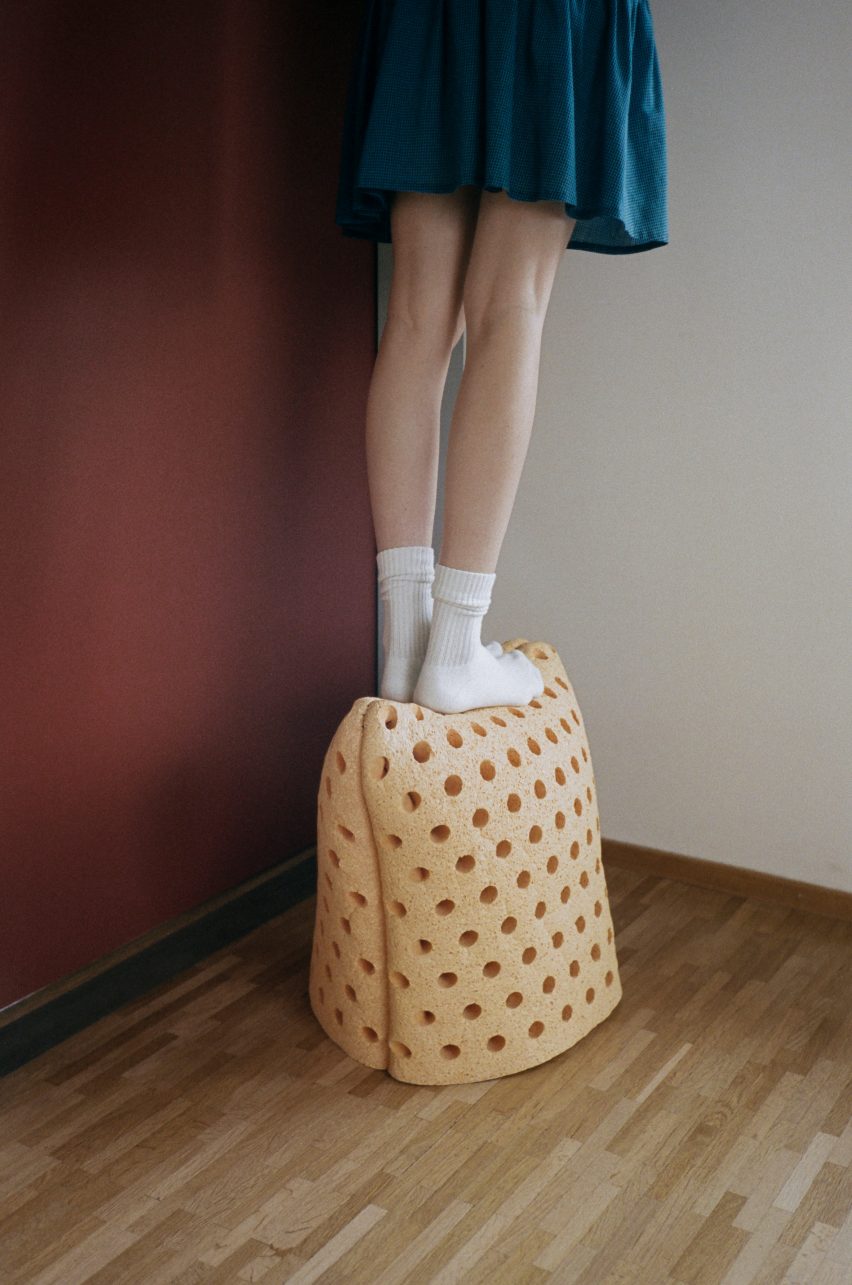
The sponge is derived from wood offcuts and gains its strength from the very same cellulose fibres that a tree uses to reinforce its trunk and branches.
"Cellulose is a part of nature so, like a tree, it can be flexible and strong at the same time," ÉCAL researcher and industrial designer Christophe Guberan told Dezeen.
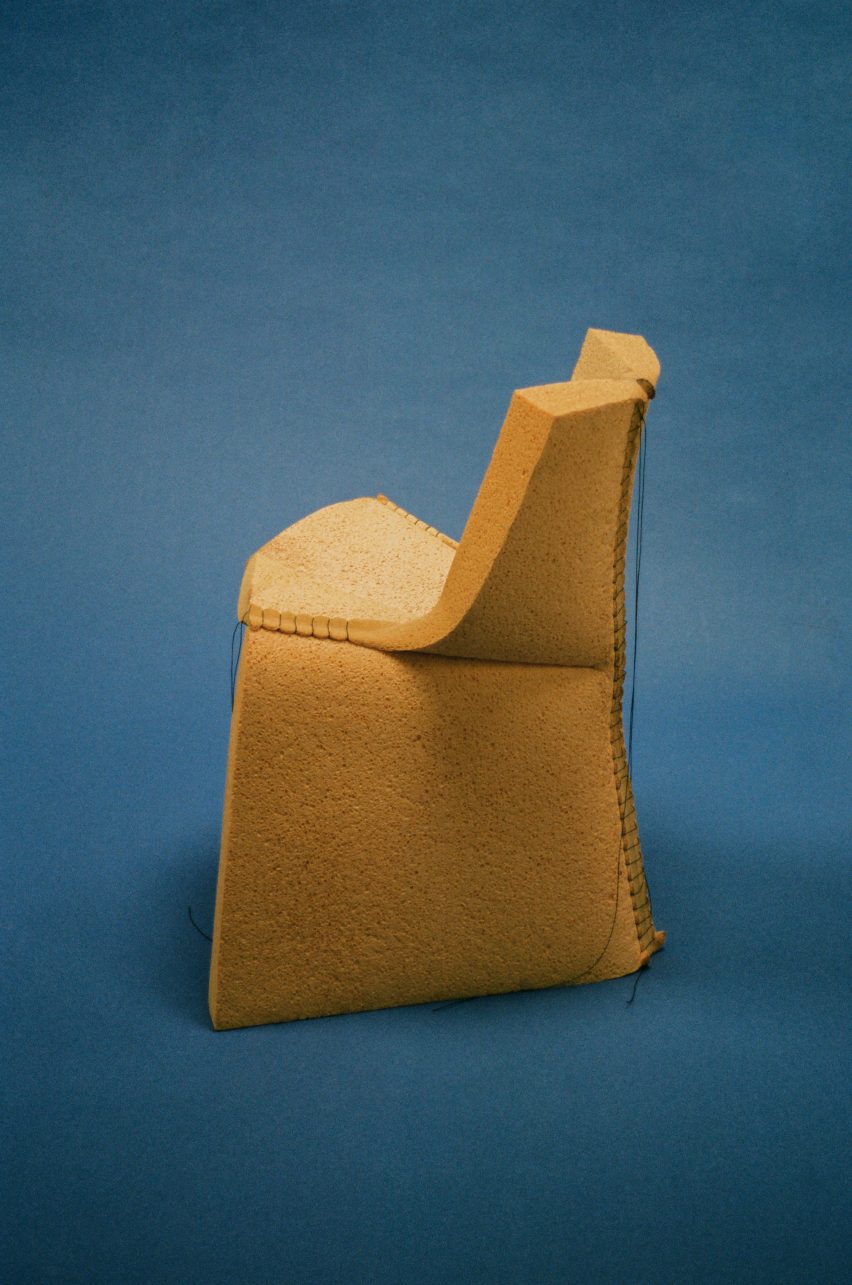
With a small spritz of water, the pieces become flexible once more, allowing them to be remoulded or repaired by smoothing out any dents.
And, once the furnishings have reached the end of their life, they can be either recycled or backyard composted, breaking down in soil within a matter of months.
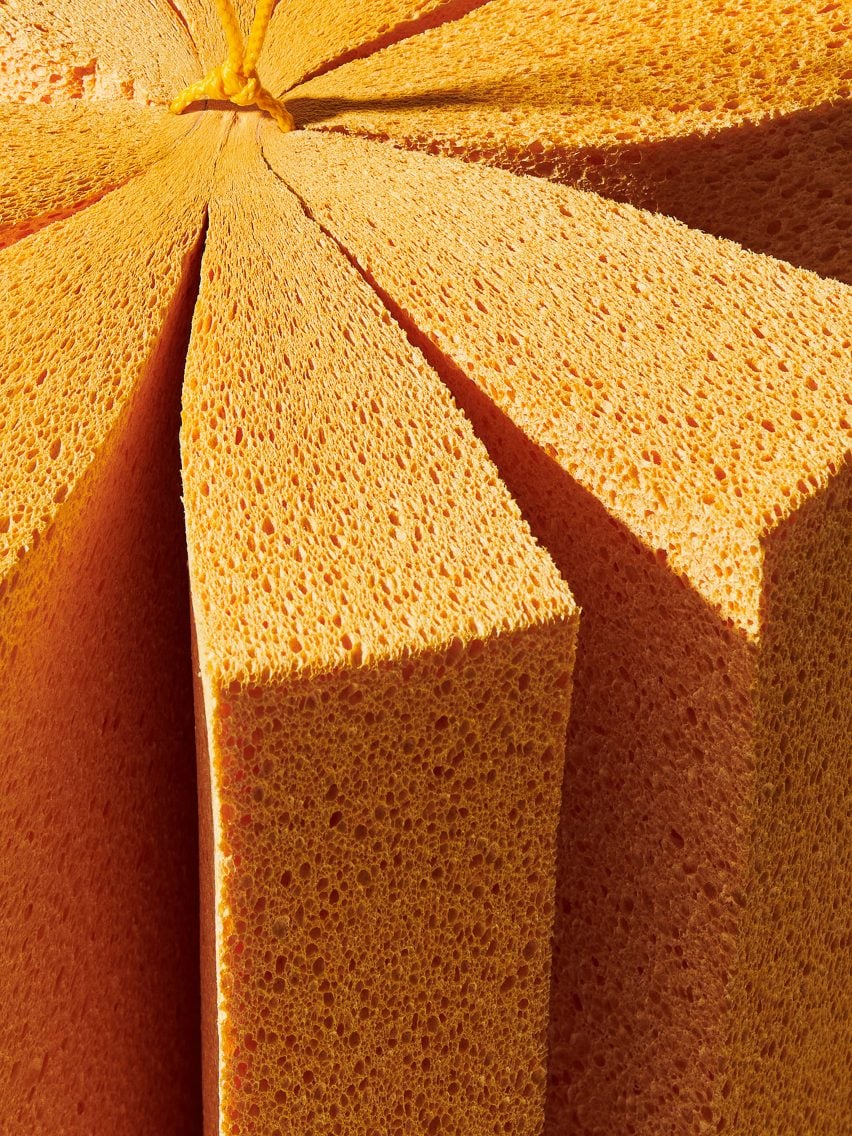
UPS is the result of a two-year research project by Guberan and fellow ÉCAL professors Anthony Guex and Camille Blin, focused on exploring different inflatable and compressible materials that could push flat-pack furniture to new, more efficient limits.
Out of the many materials considered – including cork, latex and luffa – cellulose sponge crystallised itself as both "the most surprising and most promising", according to the researchers.
First developed in the 1940s, the material is commonly used to make household, makeup and medical sponges, although its use in furniture is "virtually unheard of" according to Guberan.
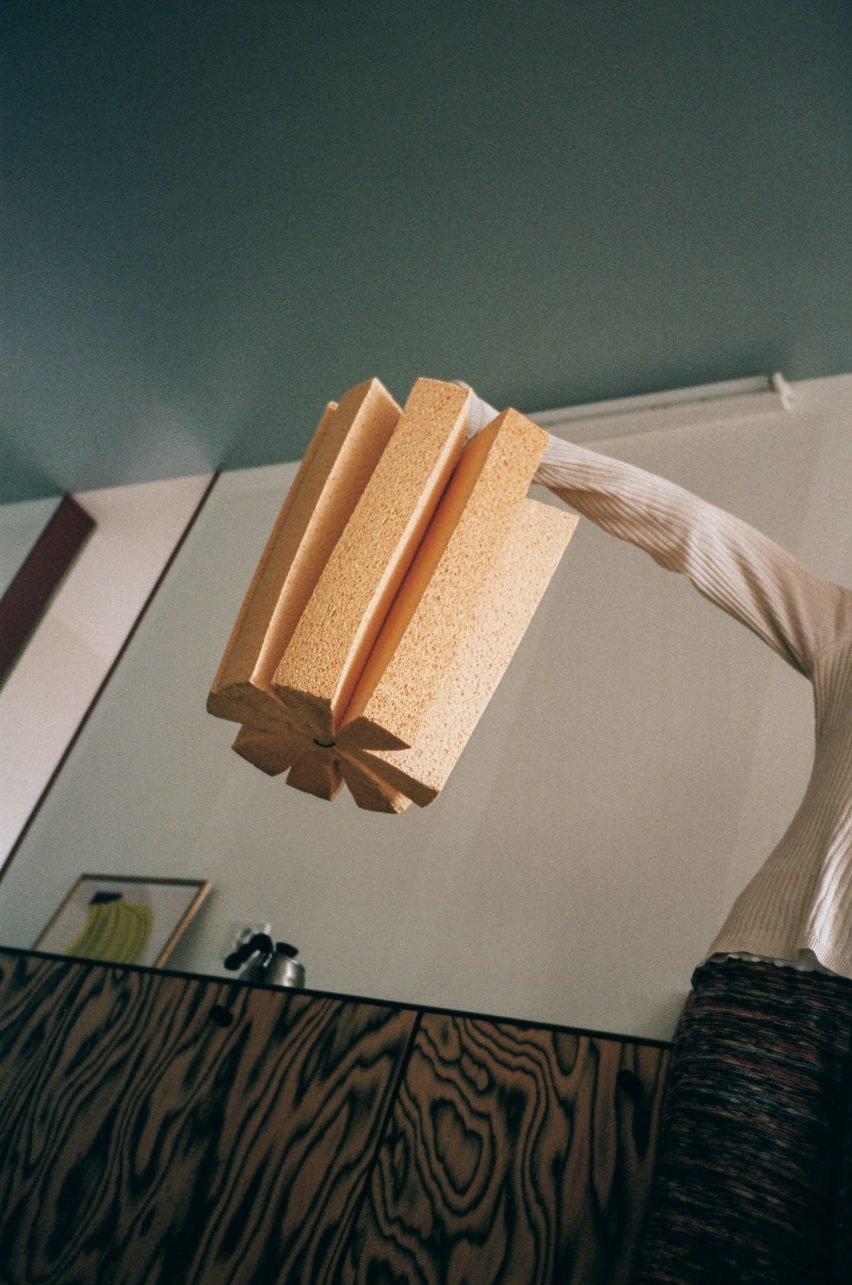
To make the sponge, cellulose was extracted from wood offcuts, chemically dissolved and ultimately regenerated in the form of sheets using the same process developed to make viscose and other cellulose textiles.
In this case, Glauber's salt is added into the mixture to give the sponge its many pores and supercharge cellulose's natural ability to absorb water.
The resulting material is generally sold in the form of standardised sheets that are compressed and dehydrated for easy transport.
Using these off-the-shelf building blocks, ÉCAL's research team trialled various methods of cutting, milling and joining to encourage the sponge to expand in different ways and worked with a group of graduate product design students to produce prototype products using these techniques.
The Milan showcase highlights the fruits of this labour and features 16 pieces of furniture and homeware alongside their flat-packed counterparts, including a chair, several tables and stools, plus smaller pieces such as a wine rack.
The aim was to keep interventions as minimal as possible to explore the possibilities of the material and allow its natural expansion to dictate the shape.
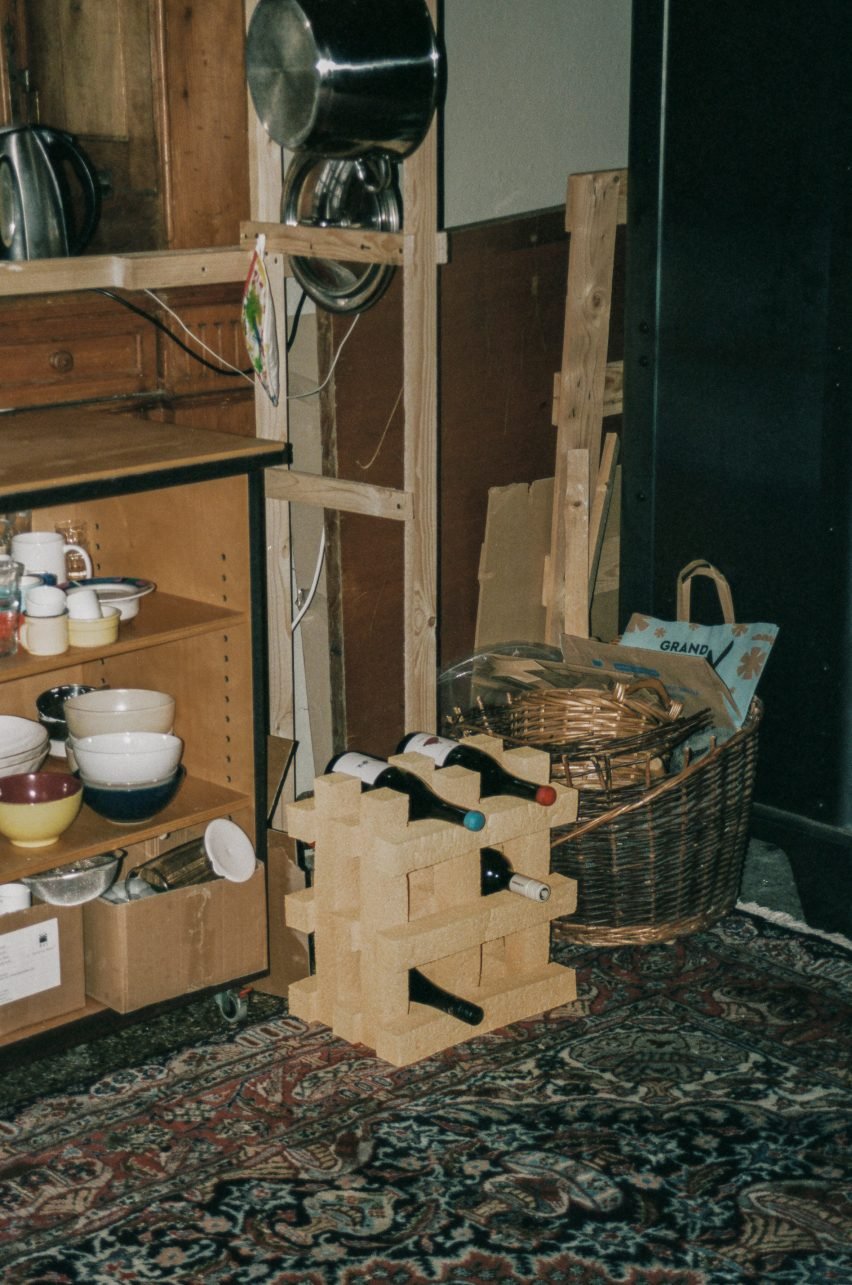
Several of the products were created by CNC milling barely perceptible grooves into the sponge that are dramatically exaggerated once wet, as seen in Guberan's paper bin and a tiered ikebana vase by designer Chris Kabel that sits in a shallow pool of water to stay moist.
"A very slight change in thickness results in a completely different change in the expansion," said ÉCAL graduate Maxwell Ashford. "So you're able to create very unique 3D objects from this 2D profile."
Guex contributed a star-shaped stool and coffee table, constructed by stacking three sponge sheets on top of each other and tying them together with a black cord at the centre, causing them to fan out into a circle as they expand.
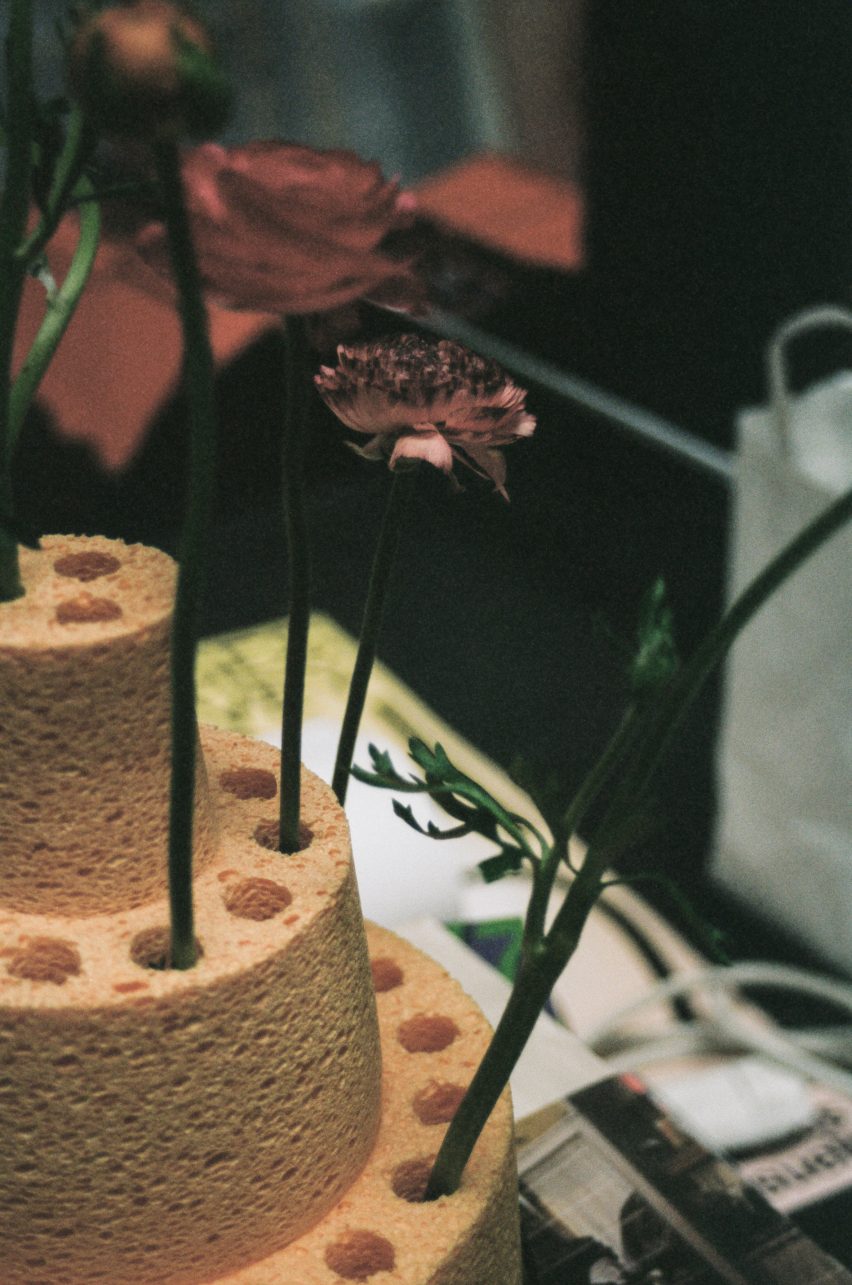
Graduate student Brice Tempier harnessed the pliability of the sponge to create a customisable shelf that can be moulded into different shapes while wet.
"You can decide the shape you want for the shelf and when it's dry, it will stay like that," Guberan said. "And if you move somewhere else where you have another setup, you can re-wet it and remould it."
Two other stools in the collection, created by Blin and Kabel, use laser-cut perforations to help these denser pieces to harden more quickly.
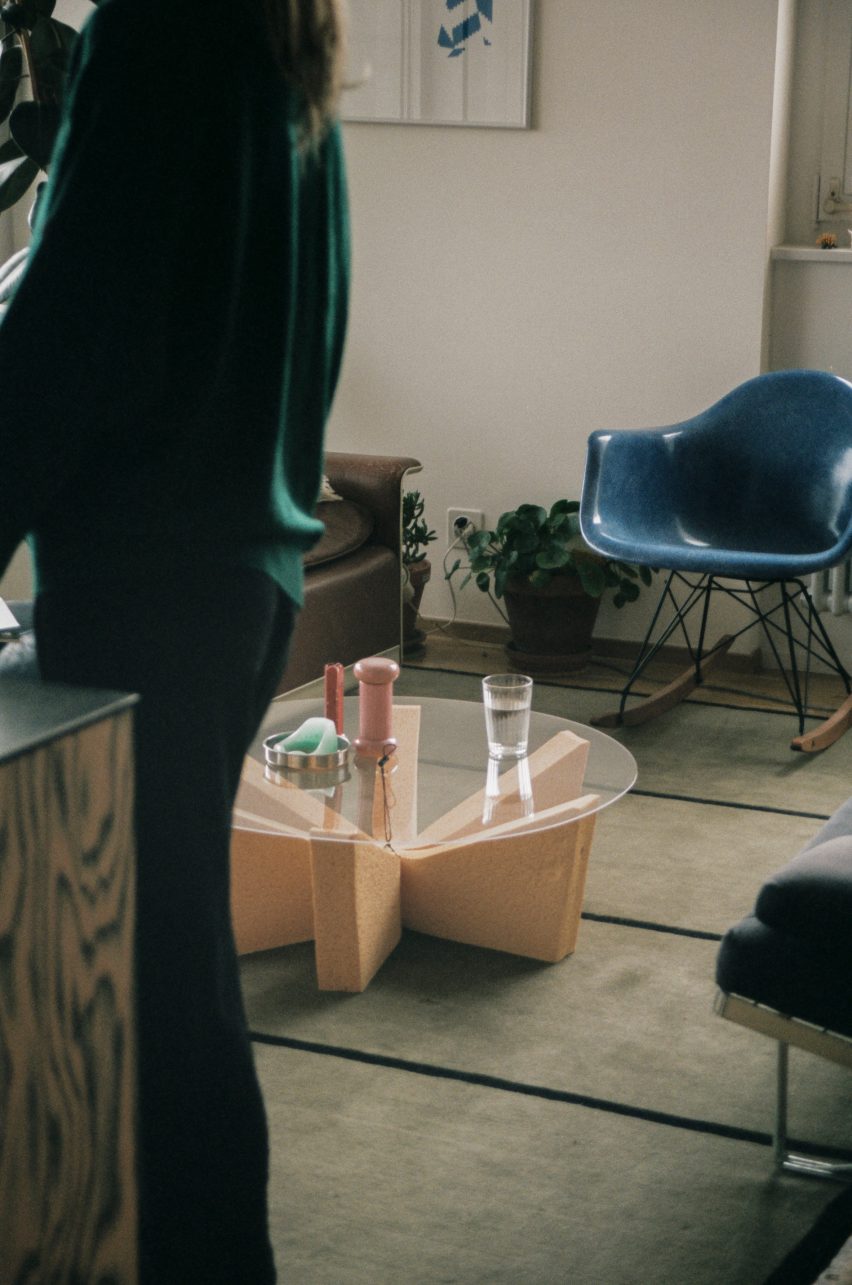
The actual drying time of the furniture varies based on size and the local climate, ranging anywhere from a few hours to several days.
Rather than being an inconvenience, the hope is that the furniture's elaborate unfurling process will form an "integral part of the owner's experience", much like it did with Gaetano Pesce's iconic UP5 chair made from self-expanding polyurethane, which the Italian designer debuted in Milan in 1969.
"Every 20 minutes, we unveiled a new chair," Pesce told the ÉCAL team shortly before his death. "We tore open the bag, and people lined up just to witness the sight: a chair rising like dough."

Although ÉCAL's prototypes are not yet ready for industrial production, Guberan says they can provide a roadmap for how to make furniture delivery more sustainable.
"Our goal was never to put this on the market tomorrow," he said. "We know how complicated it is to bring a new material and new research into the industry."
"But I think it's the role of a school to dream a little bit and to have the liberty to offer something different."
The Dezeen team reported live from Milan last week, where an exhibition of new works by Pesce opened in the wake of the maestro's death earlier this month.
The video is by Marvin Merkel and the photography by Jasmine Deporta unless otherwise stated.
Milan design week took place from 15 to 21 April 2024. See Dezeen Events Guide for an up-to-date list of architecture and design events taking place around the world.